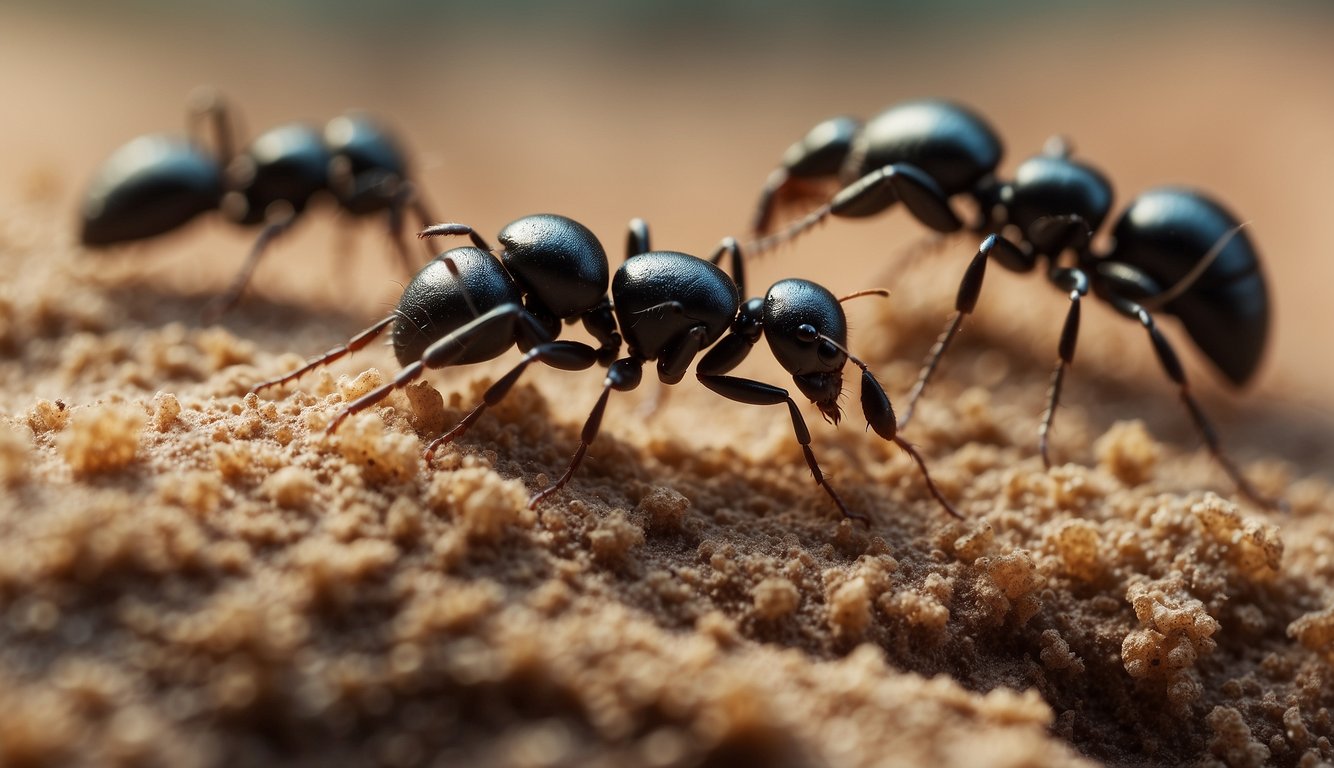TheHerbProf.com is a treasure trove of knowledge for those interested in natural healing and herbal remedies. The website is run by Paul Johnston MD. A naturopathic who has not only received extensive education in the field but also has personal experience in self-healing.
Using diatomaceous earth for ants is a safe, natural, and effective way to control ant infestations. Diatomaceous earth is a fine powder made from the fossilized remains of diatoms, a type of hard-shelled algae. When ants come into contact with diatomaceous earth, it dehydrates their exoskeletons and ultimately kills them.
One of the benefits of using diatomaceous earth for ant control is that it is non-toxic to humans and pets. Unlike chemical pesticides, which can be harmful to both people and animals, diatomaceous earth is a natural and safe alternative. It is also an environmentally friendly option, as it does not harm beneficial insects like bees or ladybugs.
To use diatomaceous earth for ants, it is important to first locate the source of the ant problem. This may be a trail of ants leading to a nest, or a visible anthill. Once the source has been identified, diatomaceous earth can be applied liberally to the area. It is important to reapply the powder after rain or watering, as moisture can reduce its effectiveness.
Understanding Diatomaceous Earth
What Is Diatomaceous Earth?
Diatomaceous Earth, or DE for short, is a naturally occurring substance made from fossilized diatoms, which are single-celled algae that live in bodies of water. It is a fine powder that is made up of the silica skeletons of these diatoms and is known for its abrasive and absorbent properties.
The Science Behind DE and Ants – Get Yours Here!
When ants come into contact with DE, the sharp edges of the fossilized diatoms cut through the ant’s exoskeleton, causing it to dehydrate and ultimately die. This process is entirely mechanical and does not involve any chemicals, making it a safe and environmentally friendly method of ant control.
It is important to note that not all types of DE are suitable for use as an insecticide. Food-grade DE is the only type that is safe for use around humans and pets. This type of DE has been treated to remove any impurities and is considered safe for ingestion.
In summary, Diatomaceous Earth is a natural and effective way to control ant infestations without the use of harmful chemicals. By understanding how it works and using the correct type of DE, you can safely and effectively rid your home of ants.
Safety and Precautions – How To Use Diatomaceous Earth For Ants?

As with any pest control product, it is important to follow safety guidelines when using diatomaceous earth (DE) to control ants. Here are some important precautions to take:
Is DE Safe for Humans and Pets?
Food-grade DE is generally considered safe for humans and pets. However, inhaling large amounts of DE can cause respiratory discomfort, so it is important to wear a mask when applying it. Additionally, DE can be drying to the skin, so wearing gloves is recommended.
Protective Measures When Using DE
To ensure safety when using DE, follow these protective measures:
- Wear a mask: When applying DE, it is important to wear a mask to avoid inhaling the dust. A simple dust mask is sufficient for most applications.
- Wear gloves: DE can be drying to the skin, so it is recommended to wear gloves when handling it.
- Keep pets away: While food-grade DE is generally safe for pets, it is still important to keep them away from the area being treated until the DE has settled.
- Avoid applying in windy conditions: Wind can cause DE to become airborne, which can be dangerous if inhaled. Wait for a calm day to apply DE.
- Store DE in a safe place: Keep DE out of reach of children and pets, and store it in a cool, dry place.
By following these precautions, you can safely and effectively use diatomaceous earth to control ants around your home.
Preparation for Ant Control – Get Yours Here!

As a homeowner, it is important to be prepared for ant infestations. Before using diatomaceous earth (DE) for ant control, it is necessary to identify the ant infestation and choose the right type of DE.
Identifying Ant Infestations – How To Use Diatomaceous Earth For Ants?
To identify an ant infestation, look for ant trails and nests. Ant trails are lines of ants moving in a specific direction, often towards a food source. Nests are where the ants live and reproduce. Ant nests can be found both indoors and outdoors, and can be located in walls, floors, and ceilings.
It is important to identify the type of ant infestation, as different types of ants require different methods of control. For example, the Argentine ant is a common household ant that can be controlled with DE. On the other hand, the carpenter ant requires a different approach, such as baiting.
Choosing the Right Type of DE
When using DE for ant control, it is important to choose the right type of DE. Food-grade DE is safe for use around humans and pets, while non-food-grade DE can be harmful if ingested.
Food-grade DE is effective in controlling ant populations by dehydrating the ants. When the ants come into contact with the DE, it absorbs the oils and fats from their exoskeleton, causing them to dehydrate and die.
It is important to note that DE must be reapplied after rainfall or watering, as it loses its effectiveness when wet.
Identifying the ant infestation and choosing the right type of DE are important steps in preparing for ant control. By following these steps and using DE correctly, homeowners can effectively control ant populations in their homes.
Application Methods – How To Use Diatomaceous Earth For Ants?

When it comes to applying diatomaceous earth for ants, there are different methods that you can use depending on where the ants are located. In this section, I will cover the two main application methods: indoor and outdoor.
Indoor Application
For indoor application, you can use a duster or a shaker to apply diatomaceous earth along the ant trail and entry points. Make sure to apply a light dusting of diatomaceous earth on baseboards, window sills, and any other areas where ants are likely to enter your home. You can also mix diatomaceous earth with water to create a spray and apply it to areas where ants are commonly found.
Outdoor Application – Get Yours Here!
For outdoor application, you can apply diatomaceous earth around the perimeter of your home, focusing on entry points such as doors and windows. You can also apply diatomaceous earth directly to ant mounds and garden plants. Use a shaker or a duster to apply a light dusting of diatomaceous earth. Make sure to reapply after rain or heavy watering.
Remember that diatomaceous earth works best when it is dry, so avoid applying it on wet surfaces. It is also important to wear a mask when applying diatomaceous earth to avoid inhaling the fine dust particles.
By following these application methods, you can effectively use diatomaceous earth to control ants both indoors and outdoors.
Maximizing Effectiveness – How To Use Diatomaceous Earth For Ants?

When it comes to using diatomaceous earth for ants, creating a barrier is one of the most effective methods to keep these pesky insects at bay. Here are some tips to maximize the effectiveness of your diatomaceous earth barrier.
Creating a Diatomaceous Earth Barrier – How To Use Diatomaceous Earth For Ants?
To create a barrier, simply sprinkle a generous amount of diatomaceous earth along the perimeter of your home or garden, paying close attention to areas where ants are likely to enter, such as around doors and windows. Be sure to apply the diatomaceous earth in a continuous line, as any gaps can allow ants to sneak through.
It is important to note that diatomaceous earth is most effective when it is dry. If it gets wet, it loses its effectiveness. Therefore, it is best to apply the diatomaceous earth on a dry day. If it does rain, you will need to reapply the diatomaceous earth to maintain its effectiveness.
Maintaining the DE Barrier – Get Yours Here!
To ensure that your diatomaceous earth barrier remains effective, it is important to maintain it regularly. This includes reapplying the diatomaceous earth after rainfall or if it gets disturbed in any way. Additionally, if you notice any gaps in the barrier, be sure to fill them in with more diatomaceous earth.
It is also important to keep the area around the barrier as dry as possible. Ants are attracted to moist environments, so if the area around the barrier is moist, they may be more likely to cross it. If you notice any areas where water is pooling, try to redirect the water away from the barrier.
By following these tips, you can maximize the effectiveness of your diatomaceous earth barrier and keep ants at bay.
Aftercare and Monitoring – How To Use Diatomaceous Earth For Ants?
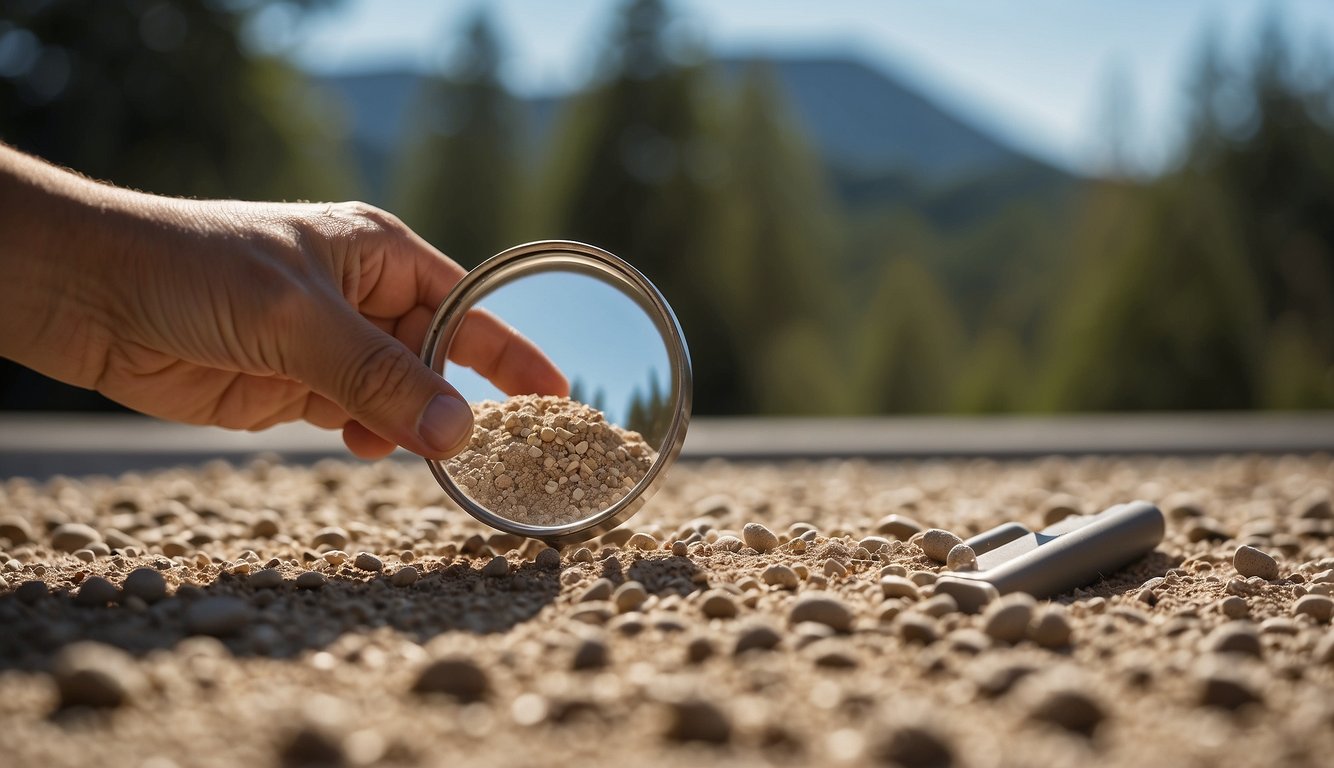
As with any pest control method, it’s important to assess the results of using diatomaceous earth for ants. Check for any remaining ant activity after a few days. If you still see ants, repeat the application of diatomaceous earth until the ant population is under control.
It’s also important to monitor the area for any new ant activity. Ants are persistent creatures and may find new entry points into your home or garden. Keep an eye out for any new trails or worker ants and apply diatomaceous earth as needed.
In addition to monitoring for new ant activity, it’s important to take preventive measures to control future ant infestations. Keep your home clean and free of food debris, seal any cracks or entry points, and trim back any trees or bushes that may be touching your home. By taking these steps, you can reduce the likelihood of ants entering your home or garden.
Using diatomaceous earth for ants is a natural pest control method that can be effective in controlling ant populations. By assessing the results, monitoring for new ant activity, and taking preventive measures, you can keep ants under control and enjoy a pest-free home and garden.
Additional Considerations – Get Yours Here!
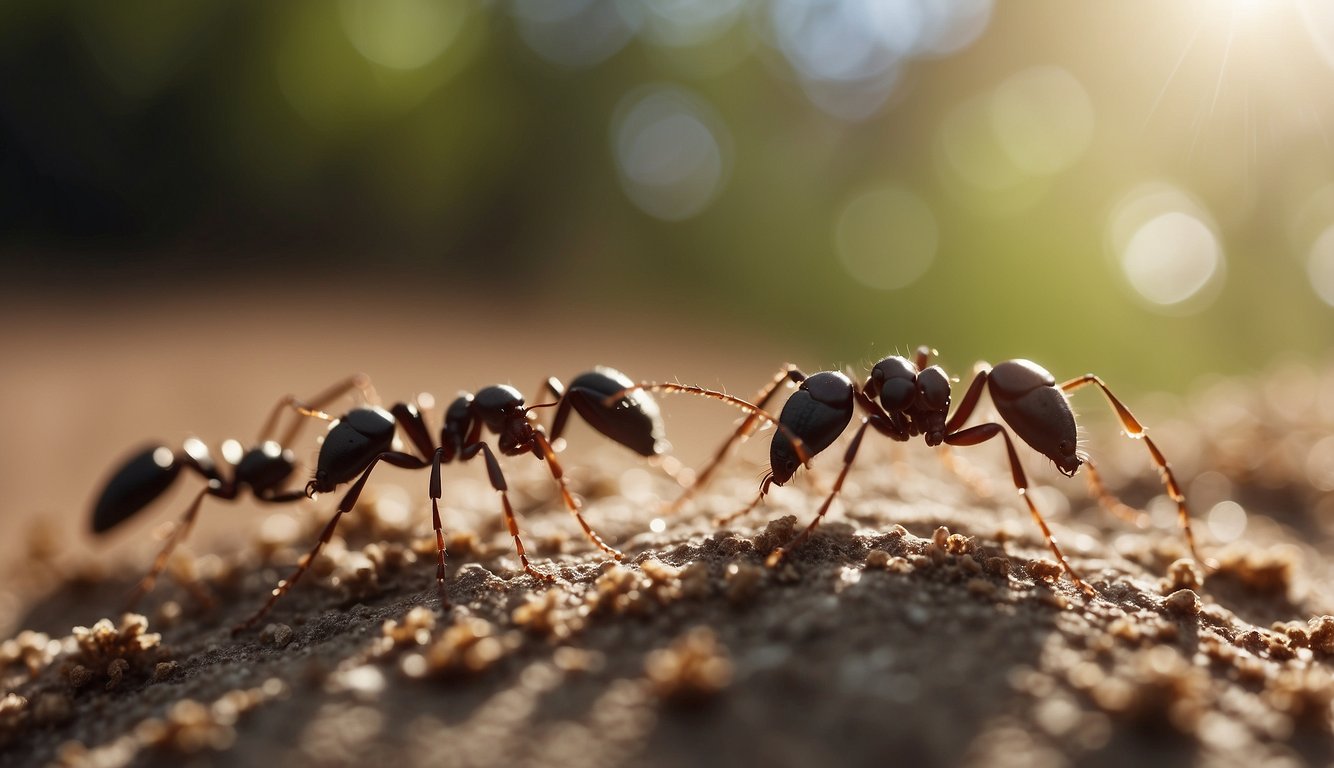
DE and Other Household Pests
While diatomaceous earth is an effective insecticide against ants, it can also be used to control other household pests such as cockroaches, bed bugs, and fleas. The sharp edges of the diatoms in the DE powder cut through the exoskeleton of the insects, causing them to dehydrate and die.
It is important to note that while DE is an organic pesticide, it can still harm beneficial insects such as bees and butterflies if they come into contact with it. Therefore, it is best to use DE only in areas where these insects are not present.
Environmental Impact of DE
Diatomaceous earth is a natural and environmentally friendly insecticide. It is non-toxic to humans and pets, and it breaks down quickly in the environment. However, it is important to use DE responsibly to minimize its impact on the environment.
When using DE, it is important to apply it only in areas where it is needed and to avoid overuse. Overuse of DE can harm beneficial insects and can also lead to the buildup of the powder in the soil, which can affect plant growth.
Overall, diatomaceous earth is a safe and effective way to control ants and other household pests. By using it responsibly, we can minimize its impact on the environment while still enjoying its benefits as an organic insecticide.
Alternatives to Diatomaceous Earth
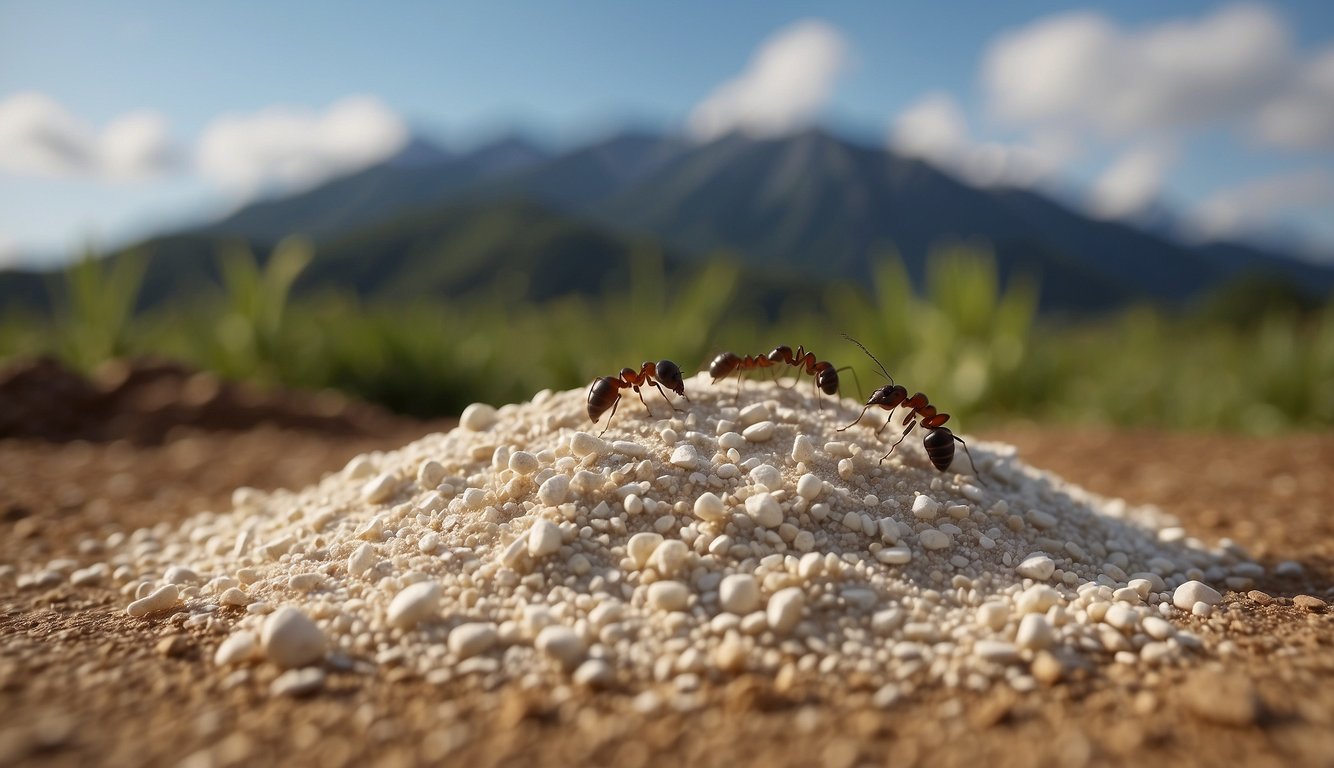
If you’re not comfortable using diatomaceous earth for ant control, there are other options available. Here are a few alternatives to consider:
Chemical Ant Killers – How To Use Diatomaceous Earth For Ants?
Chemical ant killers are a popular option for those who want to get rid of ants quickly. These products contain toxic chemicals that are designed to kill ants on contact. While they can be effective, they also pose a risk to your health and the environment. If you do choose to use a chemical ant killer, be sure to follow the instructions carefully and keep the product out of reach of children and pets.
Natural Remedies – Get Yours Here!
If you’re looking for a more natural way to control ants, there are several options available. One popular method is to use essential oils, such as peppermint, lemon, or tea tree oil. These oils are thought to repel ants and can be applied to surfaces around your home to discourage ants from entering. Another option is to use a mixture of vinegar and water to clean surfaces and deter ants from coming back.
While natural remedies may not be as effective as chemical ant killers, they are generally safer for your health and the environment. Plus, they can be a good option for those who want to avoid using toxic chemicals in their home.
Overall, there are several alternatives to diatomaceous earth that you can use to control ants in your home. Whether you choose a chemical ant killer or a natural remedy, be sure to follow the instructions carefully and take steps to protect your health and the environment.
The Earthy Connection: How To Use Diatomaceous Earth For Ants and The Herb Prof
Let’s dig into the earthy topic of How To Use Diatomaceous Earth For Ants and its connection to our herbal paradise, theherbprof.com. Ready for an earthy adventure?
Firstly, using diatomaceous earth for ants is a practice of natural pest control. It’s about protecting our plants from pesky ants in an eco-friendly way. Sounds familiar? That’s because theherbprof.com helps you protect your herbal knowledge from misinformation!
Secondly, both diatomaceous earth and theherbprof.com are about sustainable practices. Just like diatomaceous earth provides a natural solution for ant control, theherbprof.com promotes sustainable practices in herb cultivation.
Lastly, they both aim to enrich our lives. A garden free of ants brings joy to our hearts, while theherbprof.com brings joy to our minds with herbal wisdom.
So, there you have it! How To Use Diatomaceous Earth For Ants and theherbprof.com are an earthy pair indeed. They both symbolize natural pest control, sustainable practices, and enrichment. Now, isn’t that an earthy piece of information to share at your next garden party? Keep growing, folks!
References – How To Use Diatomaceous Earth For Ants?
Little Herb Encyclopedia, by Jack Ritchason; N.D., Woodland Publishing Incorporated, 1995
The Ultimate Healing System, Course Manual, Copyright 1985, Don Lepore
Planetary Herbology, Michael Tierra, C.A., N.D., Lotus Press, 1988
Handbook of Medicinal Herbs, by James A. Duke, Pub. CRP Second Edition 2007
The Complete Medicinal Herbal, by Penelope Ody, Published by Dorling Kindersley
Check the Following Articles!
Growing Peppers in a Greenhouse: Tips and Techniques
Growing Cucumbers in Grow Bags
Is Bone Meal Good for Potatoes? A Comprehensive Answer
Frequently Asked Questions – How To Use Diatomaceous Earth For Ants?
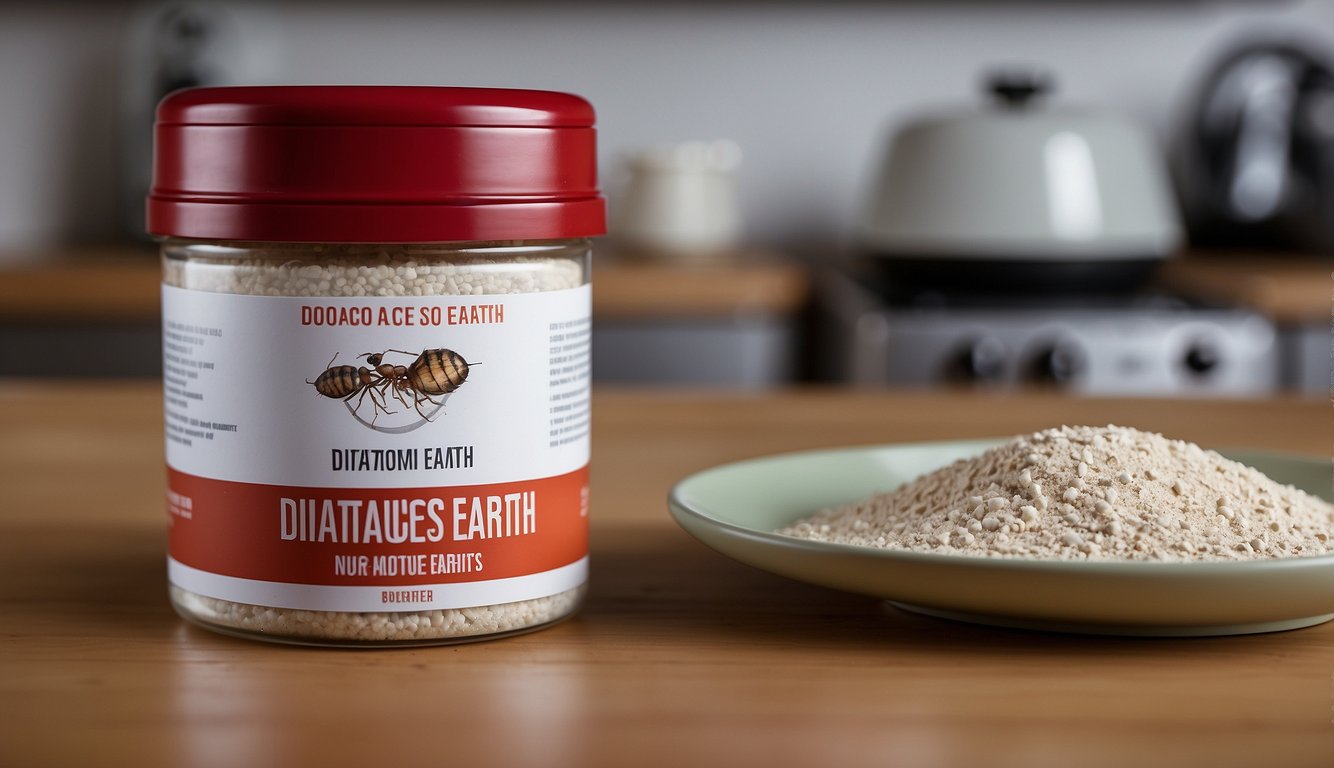
Is diatomaceous earth safe for pets when used to control ants?
Yes, diatomaceous earth is generally safe for pets when used to control ants. However, it is important to keep your pets away from the treated area until the dust has settled. This is because inhaling the dust can cause respiratory irritation in both humans and animals. It is also recommended to use food-grade diatomaceous earth, which is safe for consumption, as opposed to pool-grade diatomaceous earth, which can be harmful.
What is the most effective way to apply diatomaceous earth outdoors for ant control?
The most effective way to apply diatomaceous earth outdoors for ant control is to create a barrier around your home or garden. This can be done by sprinkling a thin layer of diatomaceous earth around the perimeter of your property, as well as around the base of trees, plants, and other structures. It is also recommended to reapply the diatomaceous earth after rain or heavy watering, as this can wash away the dust.
Can diatomaceous earth be used indoors to eliminate ants without risks?
Yes, diatomaceous earth can be used indoors to eliminate ants without risks. However, it is important to apply the dust in areas where pets and children cannot access it, such as cracks and crevices, behind appliances, and under furniture. It is also important to wear a mask when applying the dust, as inhaling the dust can cause respiratory irritation.
Does diatomaceous earth need to be carried to the nest by ants to be effective?
No, diatomaceous earth does not need to be carried to the nest by ants to be effective. When ants come into contact with the dust, it will stick to their bodies and dehydrate them. As a result, ants will die within 48 hours of contact with the dust.
How does diatomaceous earth compare to borax in terms of ant extermination?
Diatomaceous earth and borax are both effective at exterminating ants, but they work in different ways. Borax is a poison that ants will carry back to the nest, where it will kill the entire colony. Diatomaceous earth, on the other hand, kills ants on contact by dehydrating them. While both methods are effective, diatomaceous earth is generally considered to be safer for use around pets and children.
What is the expected time frame for diatomaceous earth to exterminate ants after application?
The expected time frame for diatomaceous earth to exterminate ants after application can vary depending on the severity of the infestation. In general, it can take anywhere from a few days to a few weeks for the dust to eliminate the entire colony. However, it is important to continue to reapply the dust as needed until all ants are eliminated.
